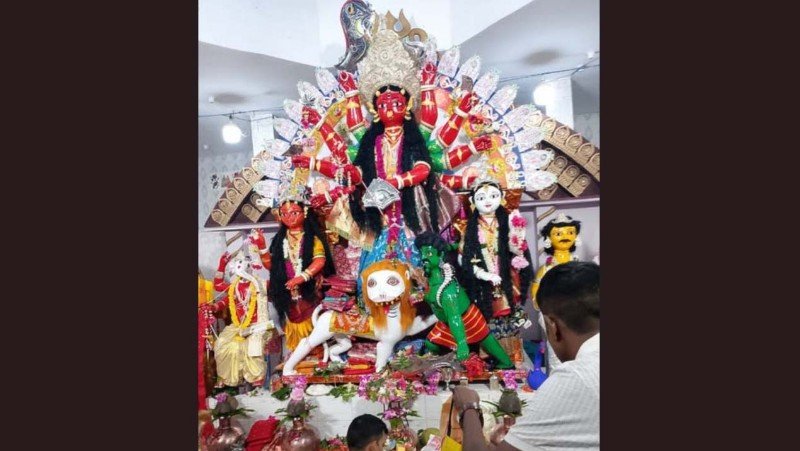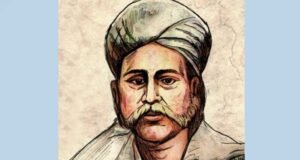
As the morning light spreads over the fields of Panchgaon in Moulvibazar’s Rajnagar upazila, crowds gather before the centuries-old “Lal Durga” mandap—home to Bangladesh’s only red-hued idol of Goddess Durga.
For over three centuries, the red idol, known as “Lal Durga”, has been the spiritual centre of the region’s Hindu community, drawing devotees during the Sharadiya Durga Puja.
Sanjay Das, a sixth-generation descendant of saint Sarbananda Das, said similar idols are only found in Assam’s Kamakhya.
The legend traces back to Sarbananda Das, a munshi in Assam’s Sivasagar, who reportedly had a divine encounter at Kamakhya Temple over 300 years ago. As the story goes, he was given a five-year-old girl for worship, but her skin turned crimson during rituals. Das understood that the goddess revealing herself in human form.
She instructed him to return to his ancestral home in Panchgaon, where she would appear every year during Durga Puja on the condition that the idol always remain red.
During the festival, Panchgaon transforms into a hub of devotion and festivity. Stalls line the Rajnagar–Balaganj road, offering puja essentials, sweets, toys, and religious artefacts. Families travel from distant districts, with vehicles parked along village roads.
Despite a brief interruption during the Liberation War in 1971, when rituals were performed without an idol, the puja has continued without fail. “It was not possible to sculpt the idol that year. But the prayers continued,” recalled Sanjay.
Thousands now attend the five-day festival, with the largest gatherings on the seventh, eighth, and ninth days. Offerings range from incense and candles to traditional animal sacrifices. Non-Hindus also join the celebrations, embracing the fair-like atmosphere.
Organisers say this year’s crowd seems slightly thinner than usual, though preparations are in full swing. With support from the local administration and volunteers, the puja is running smoothly.
“Managing the crowd is always a challenge, but we are happy to keep this 300-year-old legacy alive,” said Sanjay.
 Weekly Bangla Mirror | Bangla Mirror, Bangladeshi news in UK, bangla mirror news
Weekly Bangla Mirror | Bangla Mirror, Bangladeshi news in UK, bangla mirror news







